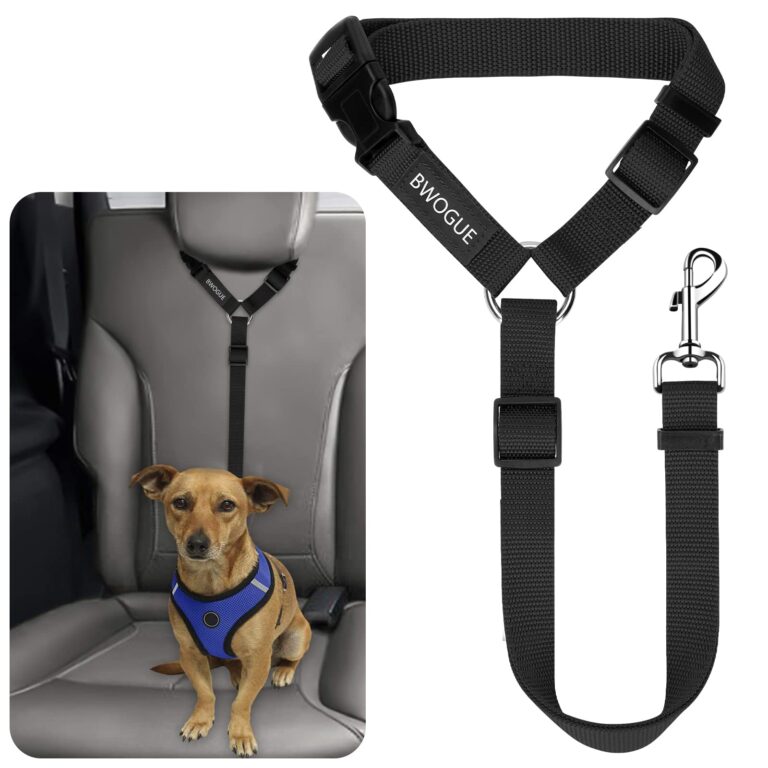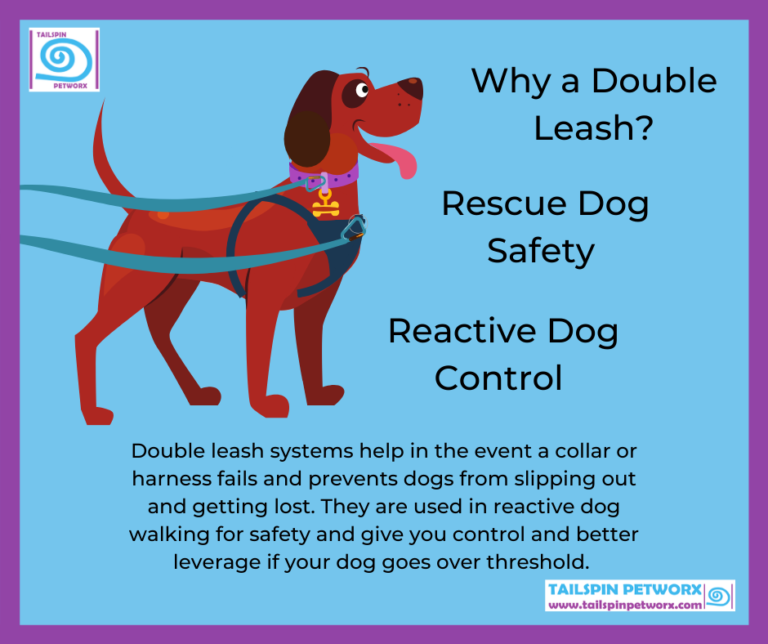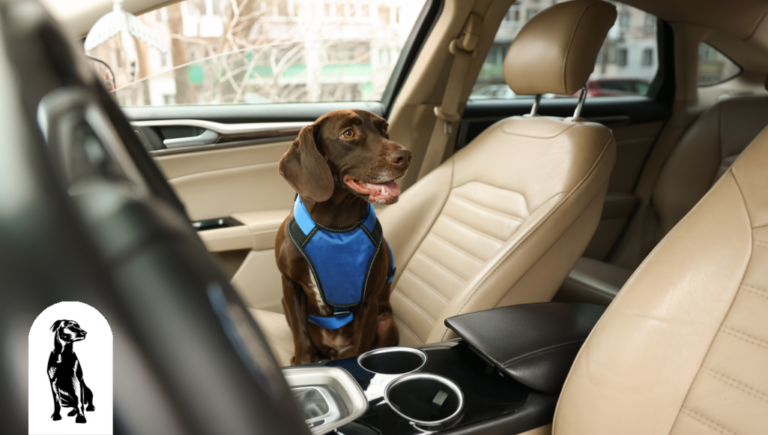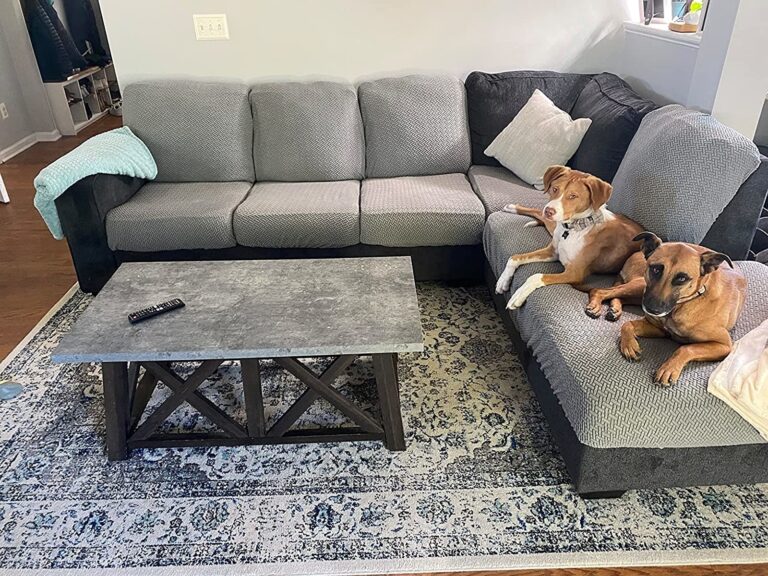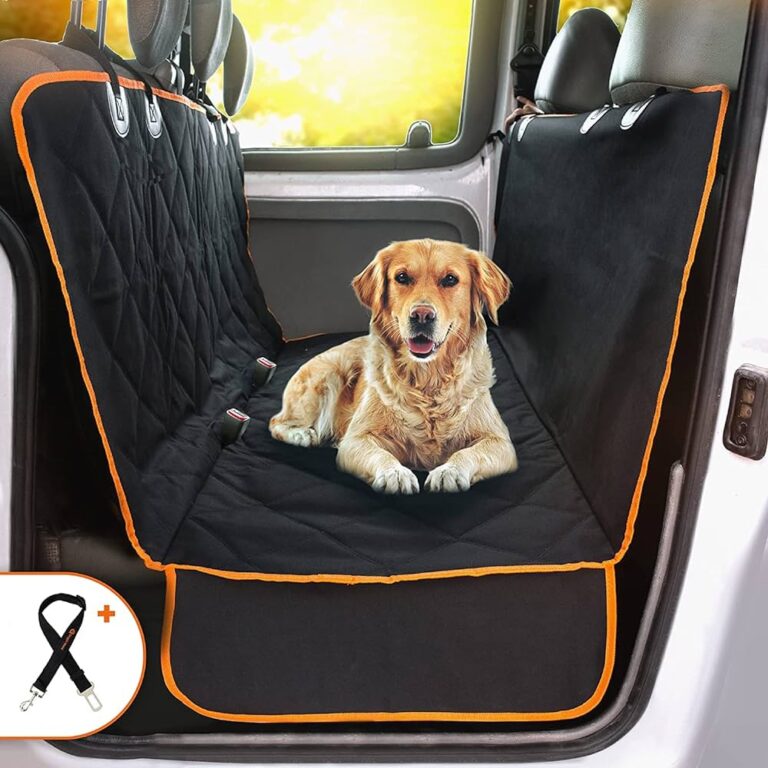How Long Can a Dog Safely Be in a Car? Essential Tips
A dog should not be left in a car for more than 5-10 minutes, even with the windows cracked. Extreme temperatures can be fatal.
Dogs are sensitive to temperature changes. Leaving them in a parked car can quickly become dangerous. On a hot day, the temperature inside a car can rise dramatically in minutes. Even on a mild day, a car can become an oven.
Cold weather poses risks too. Hypothermia can set in quickly. Always consider your dog’s health and safety. Never leave them unattended in a vehicle. If you must travel with your dog, plan ahead. Ensure they have proper ventilation and hydration. Prioritize your pet’s well-being to avoid tragic consequences.
Introduction To Traveling With Dogs
Traveling with your dog can be a delightful experience. Dogs love new sights, sounds, and smells. A road trip can be a great way for your furry friend to enjoy a change of scenery. But it’s essential to ensure their safety and comfort during the journey.
The Joy Of Road Trips With Your Canine Companion
Taking your dog on a road trip can be a wonderful bonding experience. Dogs love spending time with their owners, and road trips provide plenty of that. You get to explore new places together, making memories along the way.
Imagine the joy your dog feels with the wind in their fur. It’s an adventure for them. They enjoy the changing landscapes and the new smells. The happiness is evident in their wagging tail and excited barks.
Whether you’re heading to the beach, the mountains, or visiting family, having your dog with you makes the journey more fun. They are great companions and can make even the longest drives enjoyable.
Safety Considerations
While road trips are fun, it’s crucial to prioritize your dog’s safety. Dogs can suffer from heatstroke if left in a car for too long. Even on a mild day, the temperature inside a car can rise quickly.
Always ensure your dog has access to fresh water. A hydrated dog is a happy dog. Make frequent stops to let your dog stretch and relieve themselves.
Never leave your dog alone in the car. If you need to leave the vehicle, take your dog with you. A few minutes in a hot car can be dangerous.
Use a pet seatbelt or a travel crate to keep your dog secure. This prevents them from moving around and getting hurt. It’s also safer for you as the driver.
| Safety Tips | Details |
|---|---|
| Hydration | Ensure your dog has water. |
| Frequent Stops | Let your dog stretch and relieve themselves. |
| Never Leave Alone | Take your dog with you when you leave the car. |
| Use Pet Seatbelt | Keep your dog secure and safe. |
By following these safety tips, you can ensure a safe and enjoyable trip for both you and your dog. Happy travels!
The Basics Of Dog Physiology And Travel
Understanding how long a dog can safely stay in a car is crucial. Dogs have different physical needs and reactions compared to humans. Knowing these differences helps ensure your pet’s safety and comfort during travel.
Understanding Canine Comfort Needs
Dogs need proper ventilation, especially in a car. They cannot cool themselves as efficiently as humans. Their primary cooling method is panting, which is less effective in a hot, enclosed space.
Ensure your dog has access to fresh air. Use sunshades to block direct sunlight. Keep the car temperature comfortable and never leave your dog unattended in a parked car.
Provide your dog with water during the trip. Dehydration can occur quickly, especially in warm environments. A portable water bowl can be very useful.
Recognizing Stress Signs In Dogs
Dogs show stress in various ways. Common signs include excessive panting, drooling, or shaking. Some dogs may bark or whine more than usual.
Watch for signs of restlessness, like pacing or trying to escape the car. These behaviors indicate discomfort or stress. Address these signs promptly to ensure your dog’s well-being.
Monitor your dog’s body language. Tucked tails, flattened ears, or wide eyes can signal anxiety. Providing a familiar toy or blanket can help ease their stress.
Legal Requirements For Dog Travel
Traveling with your dog requires knowledge of legal requirements. These laws ensure your pet’s safety. They also help avoid penalties and fines. Understanding these regulations can make trips smoother and safer.
State-specific Regulations
Each state has unique laws for dog travel. Some states have strict rules while others are more lenient. Check the regulations of the state you are traveling to and from. Below is a table summarizing some key points:
| State | Regulation |
|---|---|
| California | Dogs must not be left in cars in extreme heat or cold. |
| New Jersey | Dogs must be restrained in a car. |
| Florida | No specific laws, but leaving dogs in hot cars can lead to animal cruelty charges. |
Restraint Laws For Canine Passengers
Restraint laws vary across the United States. Many states require dogs to be secured while in a car. This can be through a seatbelt harness, crate, or pet carrier. Below is a list of common restraint options:
- Seatbelt Harness: Attaches to the car’s seatbelt system.
- Crate: Securely placed in the back of the vehicle.
- Pet Carrier: Suitable for small dogs, placed on the seat or floor.
Securing your dog is not just about following the law. It also ensures the safety of all passengers. An unrestrained dog can be a distraction. In the event of an accident, restraint systems protect your dog from injury.

Credit: www.dogtopia.com
Maximizing Comfort During Car Rides
Ensuring your dog is comfortable during car rides is essential. A happy dog makes the journey enjoyable for everyone. Let’s explore some tips to maximize your dog’s comfort.
Choosing The Right Carrier Or Harness
Using the right carrier or harness keeps your dog safe. A well-fitted carrier should be spacious and secure. A harness should be comfortable and snug.
| Carrier Features | Harness Features |
|---|---|
| Soft padding | Adjustable straps |
| Good ventilation | Secure buckles |
| Easy to clean | Reflective material |
Temperature Control And Ventilation
Your dog needs a cool and airy car environment. Avoid extreme temperatures. Use air conditioning or open windows slightly for ventilation.
- Do not leave your dog in a hot car.
- Provide fresh air by cracking windows.
- Use sunshades to block direct sunlight.
Always check the temperature inside the car. Make sure it feels comfortable for your dog.
Hydration And Nutrition On The Road
Taking your dog on a road trip requires careful planning. Hydration and nutrition on the road are crucial to keep your furry friend healthy. In this section, we’ll cover how to pack essentials and schedule meal and water breaks for your dog.
Packing The Essentials
Before hitting the road, make sure you have all the necessary items for your dog. Here’s a quick checklist:
- Portable water bowl
- Dog food in a resealable bag
- Treats for good behavior
- Fresh water in a bottle
- Measuring cup for food portions
- Waste bags for clean-up
- Towel for spills or messes
Scheduling Meal And Water Breaks
Regular breaks are important for your dog’s hydration and nutrition. Here are some tips:
- Stop every 2-3 hours to offer water. This keeps your dog hydrated.
- Feed your dog at their usual meal times. Stick to their routine.
- Offer small snacks between meals. This helps maintain energy levels.
- Monitor your dog for signs of thirst or hunger. Adjust breaks as needed.
| Break Type | Frequency | Duration |
|---|---|---|
| Water Break | Every 2-3 hours | 5-10 minutes |
| Meal Break | Twice a day | 15-30 minutes |
| Stretching Break | Every 4-6 hours | 15-20 minutes |
Proper hydration and nutrition ensure your dog stays happy and healthy on the road. With good planning, your trip will be enjoyable for both of you.
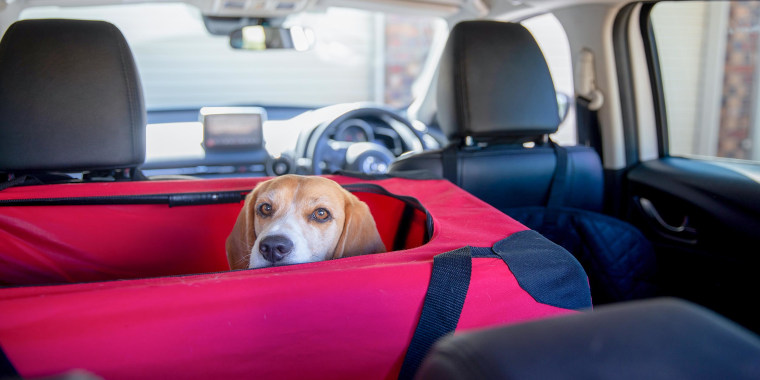
Credit: www.nbcnews.com
Breaks And Exercise
Traveling with your dog in the car can be fun. But, you must take breaks for their well-being. Regular stops and exercise keep your dog healthy and happy during the journey.
Importance Of Regular Stops
Dogs need regular stops to stretch their legs. It helps them avoid stiffness and discomfort. A short walk during a break can improve their mood. Also, it gives them a chance to relieve themselves.
Not taking breaks can lead to stress and anxiety for your dog. Regular stops also ensure they stay hydrated. Remember, dogs can’t stay in the car for long periods without moving.
Finding Dog-friendly Rest Areas
Look for rest areas that welcome dogs. These places usually have open spaces for exercise. They often provide waste disposal stations too. This makes it easy to clean up after your dog.
Here is a simple table to help you find dog-friendly rest areas:
| Rest Area | Amenities |
|---|---|
| Parkway Plaza | Open space, water stations, waste bins |
| Greenfield Stop | Walking trails, shaded areas, restrooms |
| Sunnyvale Breakpoint | Play area, benches, pet-friendly café |
Always carry a leash and some water for your dog. This keeps them safe and comfortable during stops. Happy travels!
Dealing With Motion Sickness
Traveling with your dog can be a joyful experience. However, motion sickness can turn it into a distressing one. Understanding how to deal with motion sickness in dogs is crucial. It ensures their comfort and safety during car rides. This section delves into the symptoms, preventive measures, and remedies to help your furry friend cope.
Identifying Symptoms
Recognizing the signs of motion sickness in your dog is the first step. Look for these common symptoms:
- Excessive drooling
- Whining or crying
- Yawning
- Lethargy
- Vomiting
- Panting
These signs usually start soon after the car begins moving. If your dog shows any of these symptoms, they might be experiencing motion sickness.
Preventive Measures And Remedies
There are several ways to prevent and treat motion sickness in dogs. Here are some effective strategies:
| Preventive Measures | Remedies |
|---|---|
|
|
Each dog is unique. What works for one might not work for another. Monitor your dog’s reactions and adjust accordingly. By taking these steps, you can make car rides enjoyable for your furry friend.
Emergency Preparedness
Emergency preparedness is crucial when traveling with your dog in a car. Being ready for any situation can save your dog’s life. This section will guide you through essential steps to ensure your dog’s safety.
First Aid For Dogs
Knowing first aid for dogs can make a significant difference in emergencies. Here are some basic steps you should follow:
- Check for breathing and pulse. If your dog is not breathing, perform CPR.
- Stop any bleeding. Apply pressure with a clean cloth or bandage.
- Keep your dog warm. Use a blanket to prevent shock.
- Contact a veterinarian immediately. Quick action can save your dog’s life.
What To Do In Case Of An Accident
If an accident occurs, stay calm and act quickly. Here’s what you should do:
- Move your dog to safety. Ensure they are away from traffic or any other dangers.
- Check for injuries. Assess if your dog needs immediate medical attention.
- Call for help. Contact emergency services or a veterinarian.
- Provide first aid. Use the steps mentioned above if needed.
- Stay with your dog. Comfort them until professional help arrives.
Being prepared for emergencies can make all the difference. Keep a first aid kit in your car and know the basic procedures. Your dog’s safety depends on your readiness.
Conclusion: Balancing Duration And Safety
Ensuring your dog’s safety in a car requires thoughtful planning. Balancing the duration of car trips with safety considerations is crucial. Below, we delve into how to assess your dog’s limits and create positive travel experiences.
Assessing Your Dog’s Limits
Every dog has different tolerance levels for car rides. Monitor your dog’s behavior for signs of stress or discomfort. Look for indicators such as excessive panting, whining, or restlessness.
Keep trips short at first to gauge your dog’s reaction. Gradually increase the duration if your dog remains calm and relaxed. Always provide access to water to keep your dog hydrated.
Pay attention to the temperature inside the car. Use a thermometer to ensure it stays within a comfortable range. Never leave your dog alone in a parked car, even for a few minutes.
Creating Positive Travel Experiences
Make car rides enjoyable for your dog by associating them with positive experiences. Bring along their favorite toys or a cozy blanket.
Offer treats and praise during the journey to create a positive association. Take frequent breaks for your dog to stretch and relieve itself.
Use a safety harness or a pet carrier to secure your dog. This prevents sudden movements and keeps your dog safe during sudden stops.
Ensure proper ventilation by opening windows slightly or using the car’s air conditioning. This keeps your dog comfortable and reduces stress.
Plan your route to include pet-friendly rest stops. This allows your dog to take breaks and reduces travel anxiety.
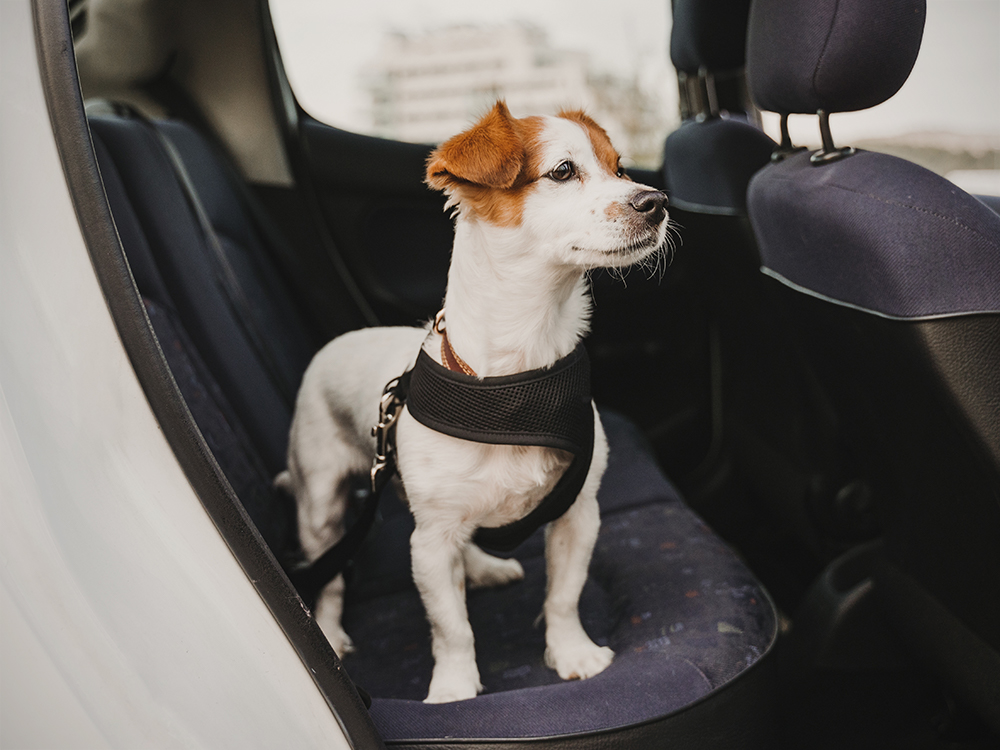
Credit: www.thewildest.com
Frequently Asked Questions
How Long Is Too Long For A Dog In A Car?
Leaving a dog in a car for more than 10 minutes can be dangerous. Cars heat up quickly, causing heatstroke. Always prioritize your pet’s safety.
Is It Ok To Leave Dog In Car For 15 Minutes?
No, it’s not safe to leave your dog in the car, even for 15 minutes. Temperature can rise quickly.
How Long Can You Leave A Dog In The Car By Itself?
Never leave a dog in the car alone for more than 10 minutes. Cars can heat up quickly, causing harm.
Can A Dog Stay In The Car For An Hour?
No, leaving a dog in a car for an hour is dangerous. Temperatures can rise quickly, causing heatstroke or death.
Conclusion
Always prioritize your dog’s safety when leaving them in a car. Limit their time to avoid overheating. Ensure proper ventilation and hydration. Remember, even a short duration can be dangerous in extreme weather. Being mindful of these factors helps keep your furry friend safe and healthy.
- Can I Get in a Taxi Without a Car Seat? - January 26, 2025
- Can I Get Chlamydia From a Toilet Seat? - January 26, 2025
- Can I Get an Uber With a Car Seat? - January 26, 2025

